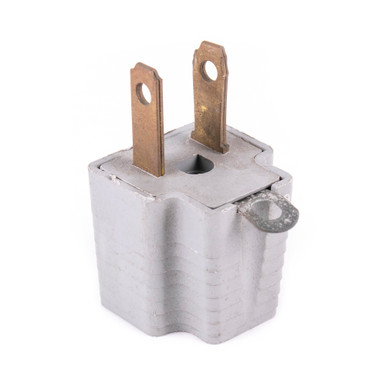I already know how to solve my problem, but I'm posting because I don't understand why it solves anything.
For quite a while, my PC has been turning itself on immediately after I put it to sleep -- even if I'm not touching it. After putting it to sleep multiple times, sometimes it would stay asleep -- until I touched some component, e.g. my metal mouse pad (which my mouse was on top of).
When I used the switch at the back and set my PC to off, it did of course go off. But if I set it to on, my computer would turn itself on, even without pressing the power button.
Lately, my PC has been locking up. Even task manager would crash.
Today, it finally died. I turned it on, went into bios, and my screen flashed a bunch of times. Then the video signal almost entirely locked up. I pressed a bunch of buttons, and it updated one time and was distorted. Then it went blank entirely.
From that point forward, I had no video signal. It didn't matter whether I used onboard on my GPU. Despite this, it did seem that my PC was loading into windows, though I can't be sure of that.
I swapped RAM, RAM slots, removed my GPU, removed storage devices, and nothing helped. It still gave me a blank screen when I tried to turn it on. Sometimes I'd get a screen for a short time before it went blank, but usually not.
... Then I switched from my onboard-driven DVI monitor to my DP monitor. Since then, I haven't had a problem. I've even put all of my RAM and my GPU, etc. back into my PC.
I went back to onboard DVI a couple of times, and I had problems right away.
Also, the weirdness with my PC turning itself on without my permission, and having it visibly discharge when I press the power button when the power switch is off (I didn't mention this previously), those problems are solved too.
And I am now using that same DVI, but with my external GPU. If I plug it into my onboard, I'll have problems.
My onboard drives DP without any problems. It's only when it tries to drive DVI that it has any problems.
What caused this? I am extremely curious. A short related to the DVI port? A defect within my CPU that's activated only when that port is being used?
For quite a while, my PC has been turning itself on immediately after I put it to sleep -- even if I'm not touching it. After putting it to sleep multiple times, sometimes it would stay asleep -- until I touched some component, e.g. my metal mouse pad (which my mouse was on top of).
When I used the switch at the back and set my PC to off, it did of course go off. But if I set it to on, my computer would turn itself on, even without pressing the power button.
Lately, my PC has been locking up. Even task manager would crash.
Today, it finally died. I turned it on, went into bios, and my screen flashed a bunch of times. Then the video signal almost entirely locked up. I pressed a bunch of buttons, and it updated one time and was distorted. Then it went blank entirely.
From that point forward, I had no video signal. It didn't matter whether I used onboard on my GPU. Despite this, it did seem that my PC was loading into windows, though I can't be sure of that.
I swapped RAM, RAM slots, removed my GPU, removed storage devices, and nothing helped. It still gave me a blank screen when I tried to turn it on. Sometimes I'd get a screen for a short time before it went blank, but usually not.
... Then I switched from my onboard-driven DVI monitor to my DP monitor. Since then, I haven't had a problem. I've even put all of my RAM and my GPU, etc. back into my PC.
I went back to onboard DVI a couple of times, and I had problems right away.
Also, the weirdness with my PC turning itself on without my permission, and having it visibly discharge when I press the power button when the power switch is off (I didn't mention this previously), those problems are solved too.
And I am now using that same DVI, but with my external GPU. If I plug it into my onboard, I'll have problems.
My onboard drives DP without any problems. It's only when it tries to drive DVI that it has any problems.
What caused this? I am extremely curious. A short related to the DVI port? A defect within my CPU that's activated only when that port is being used?



